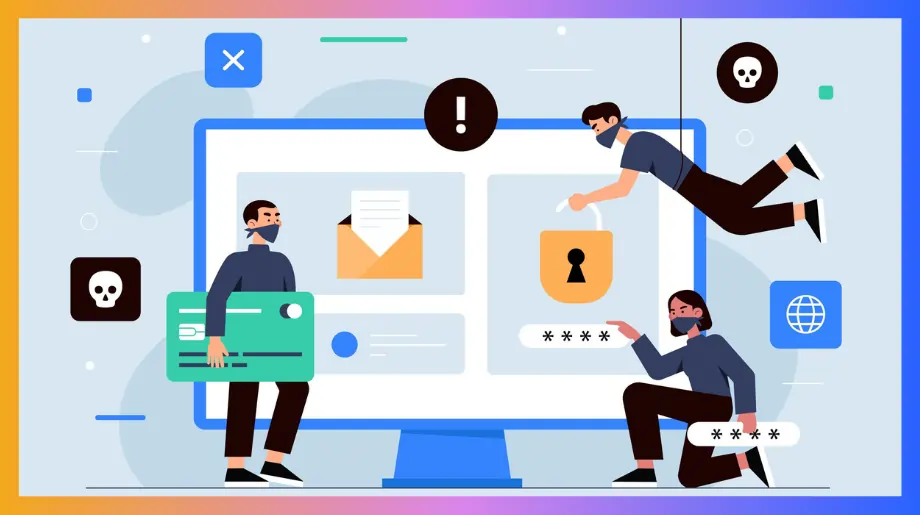Aside from protecting information from those unauthorized, Multifactor authentication also protects the users’ identities adding another layer of security to your techstack. There are several, different types of authentication.
These when integrated with another framework like single single-on (SSO) authentication, are easy to integrate with several other applications.
Additionally, there’s also the human aspect of leaking information or sharing passwords which MFA protects organizations from as well.
How do you maximize your security with multi-factor authentication? Well, in this article we’ll cover ways to improve the overall security of your database and sensitive information.
What is Multi-Factor Authentication?
Multi-factor authentication (MFA) is a security method requiring multiple verification forms, such as a password, biometrics, and a one-time code, to access an account, enhancing protection against unauthorized access.
MFA includes layers of authentication like something you know (password), something you have (smartphone or token), and something you are (biometrics like fingerprints or facial recognition), adding layered security to systems.
By layering these different types of authentication, MFA stacks multiple layers of security that are much harder for hackers to get into or even guess (the more archaic form of hacking). This makes it simple for users but a real headache for anyone unauthorized.
How Does Multifactor Authentication Improve Security?
1. Can be Used Alongside Single Sign-On Authentication
Multifactor authentication (MFA) is like adding extra locks to your database, application or platform. It's more than just a buzzword – it's a powerful tool.
Multifactor authentication when paired with single-sign-on authentication significantly boosts your cybersecurity and reduces the risk of unauthorized access. The requirement for users to provide two or more pieces of evidence to prove their identity makes it much harder for hackers to break in.
In today's world of increasingly sophisticated cyber threats, MFA is becoming less of a luxury and more of a necessity. Let's dive into seven ways MFA strengthens your security posture.
2. Reduces the Risk of Compromised Passwords
MFA and Single Sign-On (SSO) software are like peanut butter and jelly – great on their own, but even better together. With SSO allowing users to access multiple applications with one set of credentials, it’s definitely helpful for fast-paced organizations.
However, convenience shouldn't come at the cost of security. Which is why MFA adds an extra layer of protection to the SSO process.
It helps if you Imagine SSO being the master key to your digital database, and MFA as an attentive security guard that verifies your ID before you can use that key.
3. Balances Security and Usability
Striking the right balance between security and usability is key. Multi-factor authentication (MFA) offers robust protection without compromising user experience, thanks to user-friendly options like biometrics, push notifications, and hardware tokens.
MFA with SSO is having a secure system that doesn’t slow you down, ensuring that safeguarding data doesn’t mean sacrificing convenience. By implementing MFA, you add a layer of security that blends seamlessly with daily tasks.
4. Protects the User and Consumer’s Identity
MFA serves as a critical barrier against identity theft, shielding both user and consumer data from unauthorized access. Think of it as a digital bodyguard for sensitive information, providing an extra layer of defense.
Using MFA not only protects your data but also demonstrates a commitment to safeguarding client information. This added security helps build trust and provides peace of mind in an era where data breaches are common
5. Easily Adaptable to Multiple Platforms and Use Cases
MFA is versatile, adapting to various platforms and use cases with ease. Whether it's securing email access, company databases, or financial transactions, MFA can be tailored to fit the specific needs of each scenario.
This adaptability ensures you can implement the right level of security across different platforms without overcomplicating the user experience. It’s like a multi-tool for security, always ready for any situation.
6. Improves Security for Even Remote Work Environments
With remote work on the rise, MFA is essential for securing off-site access. It's like having a security check at every remote workstation, verifying identities regardless of the location or network used.
MFA mitigates risks associated with public Wi-Fi and personal devices, ensuring that even if passwords are compromised, there's an additional safeguard in place.
MFA ensures that even if a remote worker's password is compromised (perhaps scribbled on a sticky note visible during a video call), there's still another line of defense that could even be passwordless.
7. Protects from Phishing
Phishing attacks are increasingly sophisticated, but MFA provides a line of defense. Even if a password is inadvertently disclosed, MFA steps in as a secondary barrier, preventing unauthorized access.
It's like having a final checkpoint that verifies authenticity before granting entry, making it much harder for hackers to exploit stolen credentials. By requiring more than just a password, MFA significantly reduces the risk of phishing breaches.
Why Implement MFA in Your Information Security?
While this may seem like overkill for some, making use of multifactor authentication prevents any potential security breach from happening through its presence.
As the saying goes, good defense is the best offense! And keeping in line with this, implementing MFA security protocols in your infrastructure is the proactive way to ensure your information stays secure.
At Infisign we create security infrastructure that implements multi-factor authentication alongside other security layers that allow easier accessibility for users like single-sign-on authentication, directory sync, and role-based access that allows both confidentiality and multiple layers of security. Curious to know more? Don’t hesitate to try our free trial of the software.





















